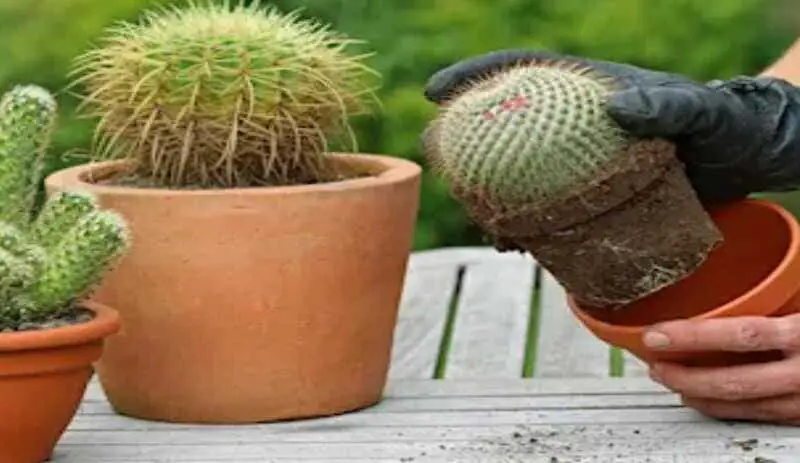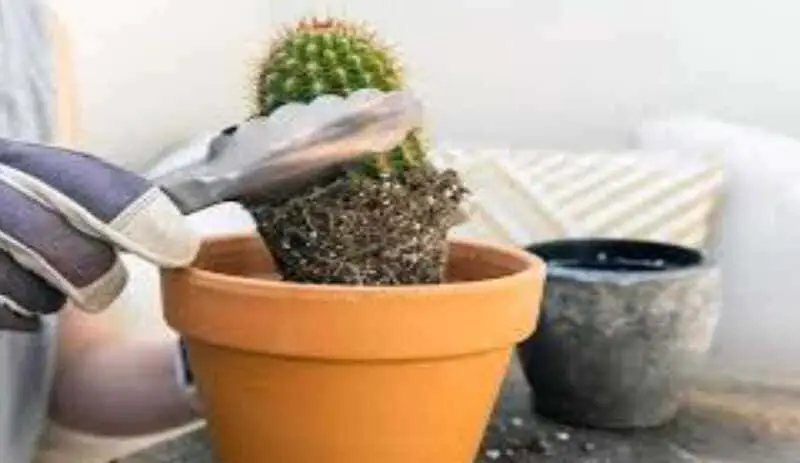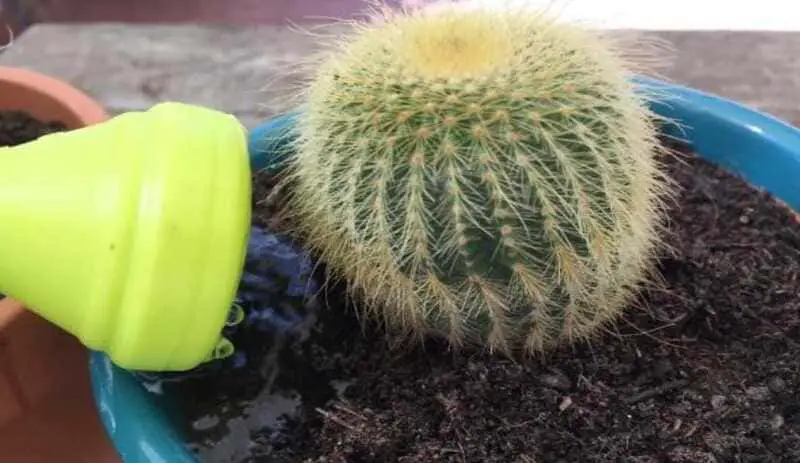Transplanting a cactus in a garden can seem like a challenging task due to the unique characteristics of these prickly plants. However, when done correctly, transplanting can be a rewarding and beneficial experience for both the cactus and the gardener. If you’re looking for the best way to transplant a cactus in your garden, you’ve come to the right place.
In this article, we will guide you through the best way to transplant a cactus in your garden. From proper cactus preparation and selecting the right soil to post-transplant care, we’ll provide you with practical tips and important considerations to ensure your cactus adapts and flourishes in its new environment.

Whether you’re transplanting a small potted cactus or facing the challenge of moving a large cactus, you’ll find useful information here to address either situation. Plus, we’ll explore alternatives to transplanting and inspire you with examples of cactus garden designs, so you can create a naturally beautiful, low-maintenance space.
So, if you’re ready to embark on this exciting adventure of transplanting a cactus in your garden, let’s start by discovering together the best way to do it. Read on to acquire the necessary knowledge and practical skills that will allow you to enjoy a vibrant, healthy cactus in your outdoor environment.
Importance and benefits of transplanting.
The best way to transplant a cactus in your garden is not only a rewarding task, but it is also essential to ensure the healthy growth and proper development of this peculiar plant. Understanding the importance and benefits of transplanting is essential to providing your cactus with the optimal conditions it needs to thrive.
One of the main reasons transplanting is crucial lies in the limited space that pots provide as the cactus grows. Over time, cactus roots can become compacted and crowded, which can hinder nutrient and water absorption. Transplanting allows the cactus access to fresh, well-drained substrate, providing it with new space to spread its roots and grow healthily.
Determining the right time to transplant a cactus is a critical factor to consider. Generally, it is advisable to transplant a cactus when it has outgrown its current pot or when its roots have become visibly tight. Watch for roots protruding through drainage holes or if the pot has become too small in proportion to the size of the cactus. These signs indicate that it is time to provide a larger, more adequate space for growth.
Before embarking on the transplanting process, it is essential to make a few preliminary considerations. First, make sure you have an appropriately sized pot on hand for the cactus. The best way to transplant a cactus in your garden is to select a pot that is slightly larger than the previous one, allowing the roots enough room to spread out. In addition, it is important to choose a pot with drainage holes to avoid excess water, which could lead to root rot problems.
Another key aspect to consider is the soil. Cacti require a well-drained substrate that provides them with the right balance of moisture and aeration. You can opt for commercially available cactus-specific substrates or prepare your own mix using coarse sand, peat moss and garden soil. Make sure the soil is dry before you begin transplanting, as excess moisture can make handling difficult and increase the risk of damaging sensitive cactus roots.
Preparing the cactus before transplanting.
To continue with the best way to transplant a cactus in your garden, it is essential to make a proper preparation to ensure the success of this important task. A series of preliminary steps are necessary to ensure that the cactus is in optimal condition and adapts favorably to its new pot and environment.
The first crucial step is to assess the state of health of the cactus. Carefully observe the overall appearance of the plant, checking for wilted leaves, spots, discoloration or signs of disease or pests. Also pay attention to the roots, making sure there are no signs of rotting or excessive tangling. Only a healthy cactus should be transplanted, as a weakened plant may have difficulty recovering from the procedure.
Once you have confirmed that the cactus is in good health, it is time to prepare the destination pot. Be sure to select a pot that is spacious enough to accommodate the cactus’ roots and allow for future growth. Also, check that the pot has drainage holes to prevent water accumulation, which could be detrimental to the cactus.
Before filling the pot with substrate, it is important to clean it properly to avoid contamination and the spread of disease. Wash the pot with warm water and use a soft brush to remove any debris or dirt that may be present. Once the pot is clean and dry, you can proceed to add the proper substrate.
Selecting the right soil is critical to the success of the transplant. Cacti require a well-drained substrate that promotes proper moisture balance and aeration. A commonly used mix for succulents and cacti consists of a combination of coarse sand, peat moss and garden soil. Make sure the substrate is dry before proceeding with transplanting, as excessive moisture could make handling difficult and damage the cactus roots.
Steps for transplanting a cactus.
Transplanting a cactus in your garden requires careful and precise steps to ensure that the plant is not damaged and successfully adapts to its new environment. The best way to transplant a cactus in your garden involves following these steps carefully and cautiously.
The first step is the careful removal of the cactus from its original pot. Before you begin, make sure that both the cactus and the substrate are dry. This will make handling easier and reduce the risk of damaging sensitive roots. Wearing protective gloves, hold the base of the cactus firmly and, using gentle motions, turn the pot gently from side to side to loosen the roots. If necessary, use a stick or gardening tool to loosen the cactus without damaging it.

Once the cactus is free from the original pot, it is crucial to handle it safely to avoid damage. Keep in mind that cacti are covered with sharp spines that can cause injury. Use thick gloves to protect your hands and, if necessary, wrap the cactus with newspaper or a towel to get a better grip without hurting yourself. Avoid touching the spines directly and handle the cactus gently and carefully.
The next step is to place the cactus properly in the new pot. Make sure the pot is prepared with adequate substrate and has drainage holes. Drill a hole in the substrate to accommodate the base of the cactus, making sure it is upright and stable. Carefully place the cactus in the hole, making sure the roots are spread out and not twisted. Then add substrate around the cactus, pressing gently to make it firm.

Once the cactus is in its new pot, be sure not to water immediately. It is advisable to wait a few days before providing water, allowing the roots to adapt to the new substrate and avoiding the risk of rotting. After a few days, gently water the cactus, making sure not to saturate the substrate and allowing excess water to drain properly.
Post-transplant care.
Once you have transplanted your cactus in the garden, it is crucial to pay attention to aftercare to ensure its adaptation and healthy growth. Proper watering and drainage are key aspects to consider for the well-being of your transplanted cactus.
After transplanting, it is important to provide adequate water. Avoid watering the cactus immediately after transplanting, as this may saturate the substrate and make it difficult for the roots to adapt. Wait a few days before watering for the first time, allowing the cactus to settle into its new pot. When it is time to water, water gently and gradually. Make sure the water is evenly distributed throughout the substrate, avoiding puddling and allowing excess water to drain properly.

Sun exposure and shade also play a key role in post-transplant care. Most cacti require abundant exposure to direct sunlight for healthy growth. However, after transplanting, it is important to avoid prolonged exposure to intense sunlight for the first few weeks. This will allow the cactus to gradually adapt to its new environment and prevent dehydration stress. As the cactus becomes accustomed to the new location, you can gradually increase sun exposure, making sure to provide partial shade during the hottest hours of the day if necessary.
In addition to watering and adequate sun exposure, nutrient supply is also important for post-transplant care. For the first few weeks after transplanting, it is advisable not to apply additional fertilizers or nutrients.
The cactus needs time to adapt to its new substrate and develop a strong root system. After a few weeks, you can start applying a specific fertilizer for cacti, following the manufacturer’s instructions. Remember not to overdose and avoid over-fertilizing, as this can damage the cactus’ roots.
Troubleshooting common problems during transplanting.
During the transplanting of a cactus in your garden, you may encounter some common problems that require extra attention and care. It is important to know how to address these problems to ensure that your cactus recovers and successfully adapts to its new environment.
One of the most common problems during transplanting is the stress experienced by the cactus. The change of location, root manipulation, and adjustment to the new substrate can stress the plant. To help your cactus cope with this stress, be sure to provide a calm and stable environment. Avoid sudden movements or sudden changes in environmental conditions. Also, it is advisable not to water the cactus immediately after transplanting, allowing it to settle into its new pot before providing water. Time and patience are critical to allow the cactus to gradually recover from the stress of transplanting.
Prevention and treatment of diseases and pests are also important during transplanting. Weakened or stressed plants are more prone to disease or pest attack. Regularly monitor the health of your transplanted cactus and act quickly on any signs of disease or pests. Inspect the cactus for spots, discoloration, damage or the presence of insects.
If you detect problems, you can treat them using natural methods or specific products for disease and pest control in cacti. Remember to follow the instructions and recommendations for use of the products to ensure their effectiveness and avoid damaging the cactus.
Poor growth or color change in the transplanted cactus may be another challenge you face. If you notice that your cactus is not growing properly or is showing a color change, it is important to evaluate a few factors. Make sure the cactus is getting the right amount of sunlight and that exposure is gradual according to the needs of the species.
Verify that watering and drainage are adequate, avoiding excess or lack of water. Also, check the substrate and make sure it is suitable for the specific requirements of your cactus. If, despite these adjustments, the problem persists, it may be necessary to consult a cactus expert for additional advice.

